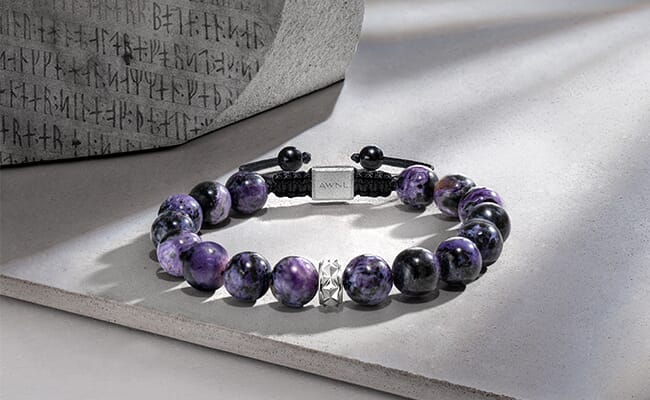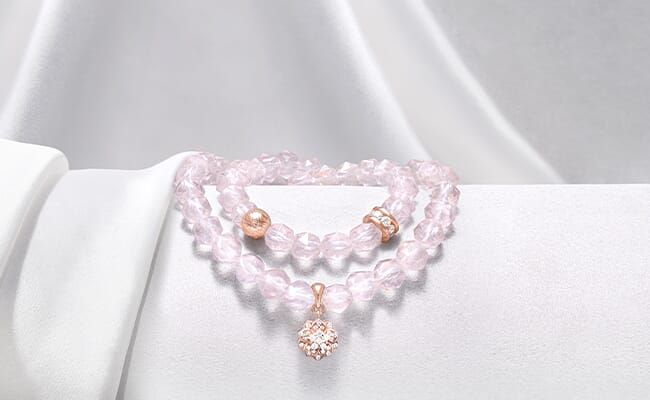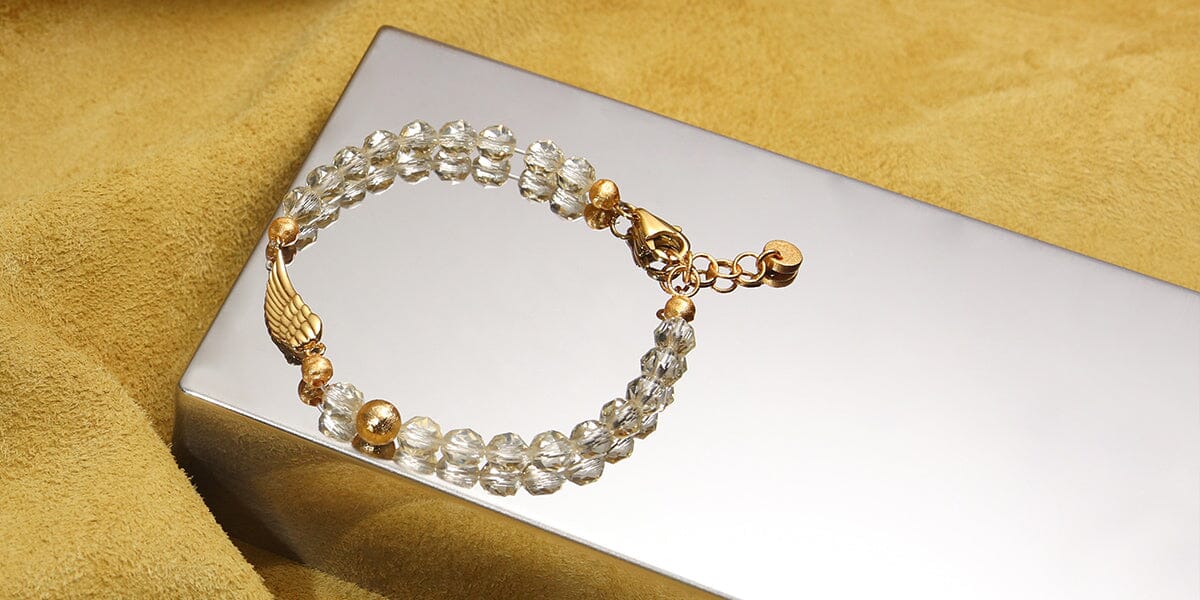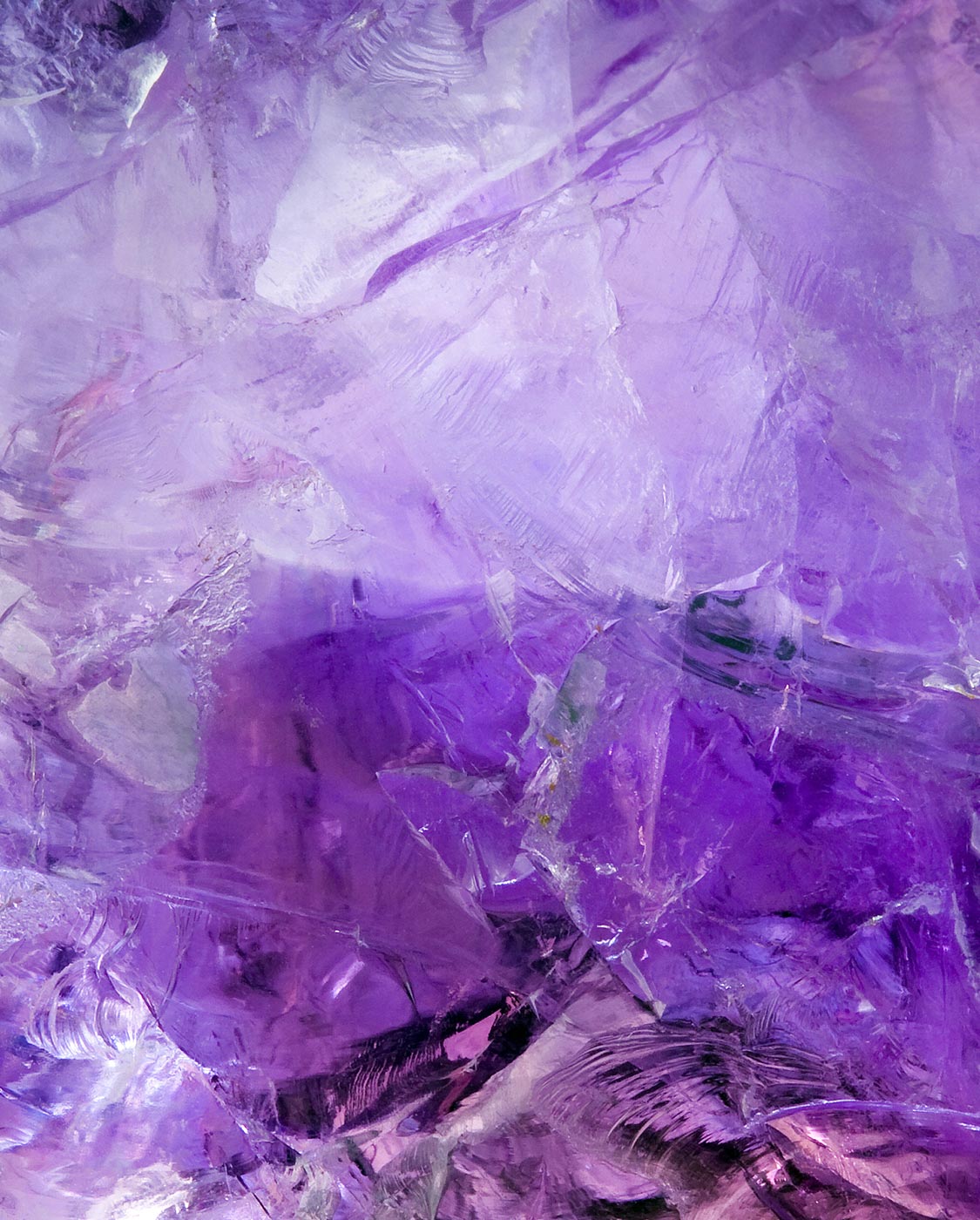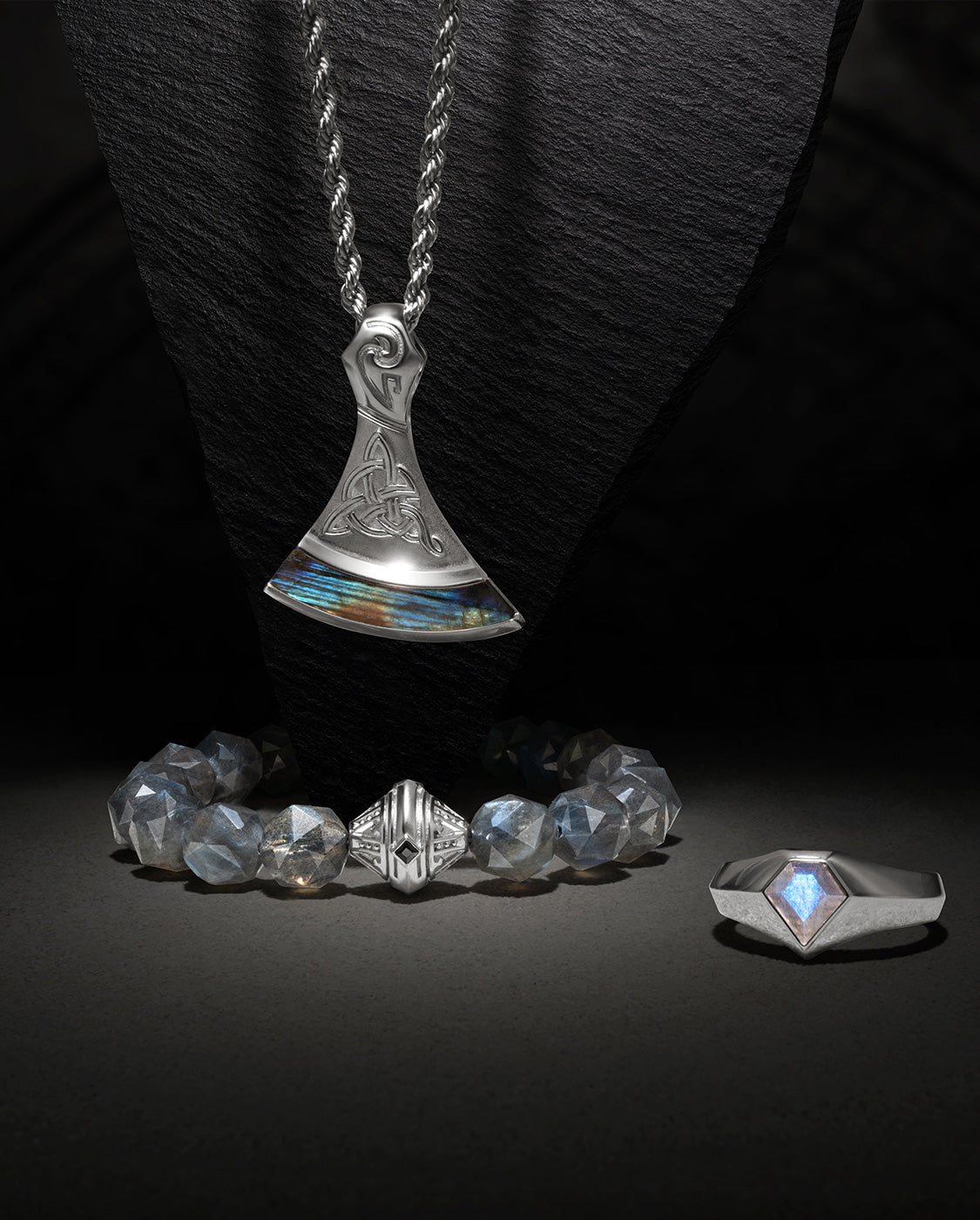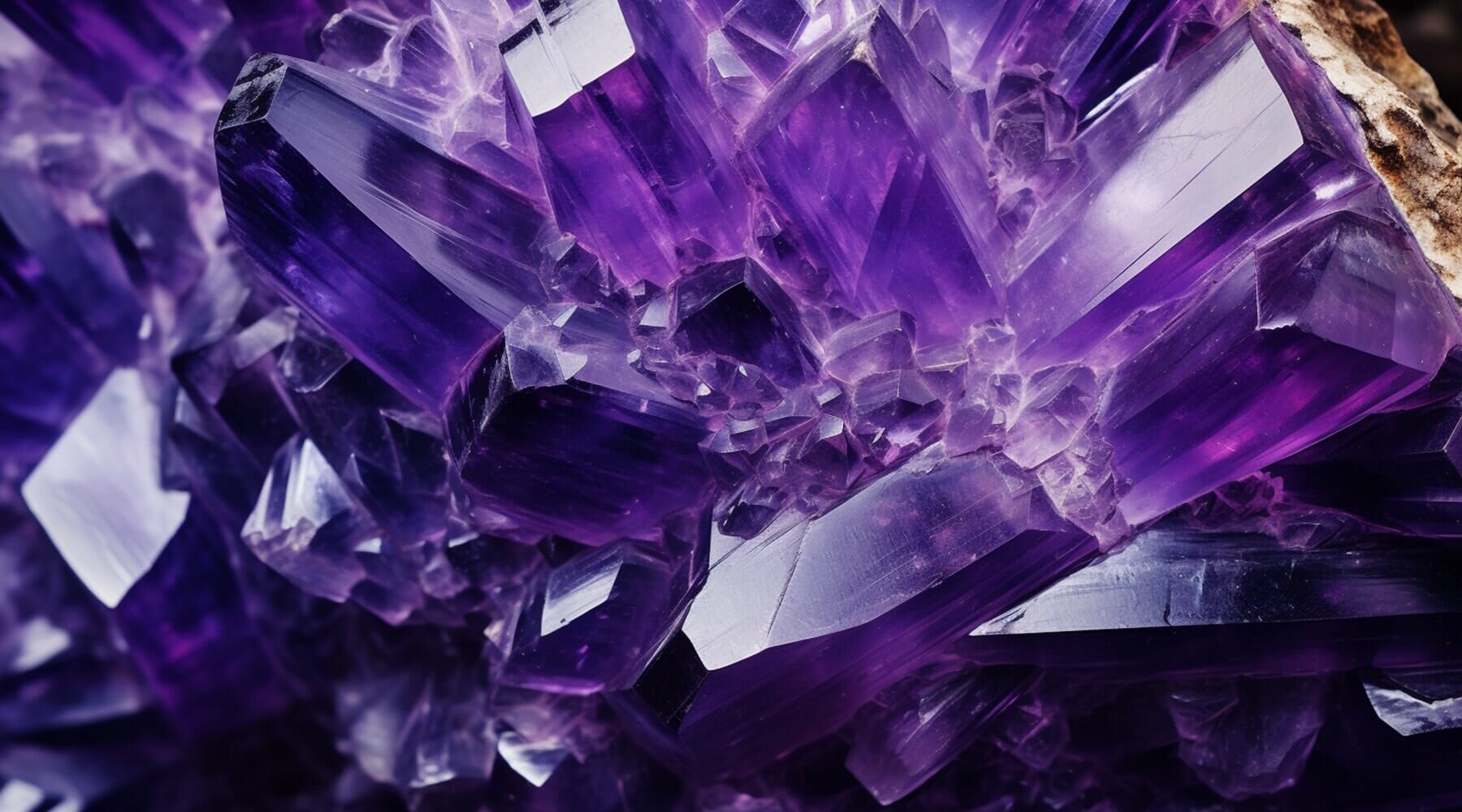
Amethyst: The Stone of Spirituality and Serenity
Table of Contents
Introduction
Amethyst, a rare purple gemstone, symbolizes sacred power across cultures. Known as Purple Jade Quartz in China, the Stone of Energy in Japan, and the Eye of Venus in Europe, it's a symbol of power and status. This guide will take you on a journey through the fascinating world of amethyst.

The Historical Journey and Cultural Significance of Amethyst
Amethyst: A Glimpse into Its Rich History and Lore
Amethyst's history is deeply intertwined with mythology and religion. It was associated with Bacchus, the Roman god of wine also named Dionysus, the Greek god of wine and was often used to carve large drinking vessels. Roman matrons wore it as a symbol of fidelity. Even Cleopatra is said to have worn an amethyst ring engraved with Mithras, a Persian deity of enlightenment and love. In the Roman Catholic Church, amethyst's pure color symbolizes the transfiguration of wine into Christ’s blood during Mass, making it a signature gemstone for bishops.

The name 'amethyst' originates from a Greek myth involving Dionysus, the god of wine. A maiden named Amethyst, who had sworn a life of chastity, was pursued by Dionysus. To protect her purity, she was transformed into a transparent crystal. Dionysus, in remorse, poured sacred wine over the crystal, turning it purple. This tale led to the belief that wearing amethyst prevents drunkenness.
Cultural Significance of Amethyst: A Global Perspective
Historically, amethyst was as valued as diamonds, often adorned by royalty. Ancient Greeks believed it could prevent drunkenness, while Christians associated it with purity. The Egyptians saw amethyst as a noble mineral that could ward off evil. Even in death, carrying amethyst was believed to provide protection in the underworld.
Amethyst's high iron content is thought to protect the magnetic energy field, making it a popular choice in religious ceremonies to ward off evil. Today, it's still used in spiritual practices, such as in Japan, where it's placed on the crown of the head to encourage enlightenment.

Physical Attributes, Formation, and Varieties of Amethyst
Amethyst's Physical Properties and Similar Crystals
Amethyst, a variety of quartz, owes its stunning purple hue to iron impurities and irradiation. With a hardness of 7 on the Mohs scale, it's a durable gemstone found in geodes and alluvial deposits worldwide. This amethyst crystal's color spectrum ranges from light pinkish-violet to deep purple. Crystals like purple fluorite share a similar color palette but differ in crystal shape and hardness. Ametrine, a blend of purple and yellow crystals, can occur naturally or be artificially heated to achieve its unique coloration.

The Formation and Mining Process of Amethyst
Amethyst, a crystal colored by traces of iron ions, forms in rock cavities left by volcanic magma bubbles. Its color can shift from pinkish-purple to dark purple, and under heat, to brown, yellow, or even green. This natural amethyst rock is found in major deposits worldwide, in Brazil, Uruguay, Zambia, Madagascar, Russia, Namibia, Canada, India, and the USA. The mining process involves exploration, accessing the deposit, extraction, sorting, grading, cutting, polishing, and market distribution. Sustainable mining practices and ethical sourcing are increasingly important in the industry.

Exploring the Spectrum of Amethyst Varieties
Amethyst comes in several fascinating varieties. Chevron amethyst, recognized by its distinct V-shaped patterns, is believed to combine quartz's strengthening qualities with amethyst's stress-relieving properties. Green amethyst, or prasiolite, is linked to the heart chakra and is thought to bridge the physical and spiritual realms. Each variety of amethyst carries its unique aesthetic and metaphysical properties.

Amethyst's color palette is as diverse as its forms. The classic purple amethyst ranges from light lavender to deep violet. Pink amethyst, with its delicate blush hue, exudes a gentle energy. Blue amethyst, a rare find, resonates with the throat chakra, promoting communication. White amethyst, often associated with purity, can help clear the mind. Green amethyst, or prasiolite, fosters a connection to nature. Each color variant not only adds to the aesthetic appeal but also brings its unique vibrational energy.
Amethyst: A Stone of Healing and Scientific Exploration
Amethyst Crystal Meaning
Amethyst, a tranquil stone, is renowned for its ability to pacify the mind, promote restful sleep, and foster a higher state of consciousness. This amethyst crystal meaning is deeply connected to its soothing aura, which aids in meditation and offers a serene passage through life's journey. It's a catalyst for self-discovery, enhancing your intuition and paving the way for inner peace.

Amethyst's light energy, akin to a divine ingredient, and its crystal structure, the method of preparation, together create a spectrum of healing variations. As a representative of the purple crystal family, amethyst embodies transcendence and compassion, the highest frequency of all light colors, and the divine's signature hue.

Amethyst's Spiritual and Healing Properties
"A Gateway to Serenity"
Amethyst, a healing gem of the tripartite crystal system, possesses the innate ability to consolidate and radiate energy, amplifying weaker energies and clearing long-standing negative blocks. This transformative process uplifts one's inner quality, particularly benefiting the brain and peripheral nerves, leading to a purified energy flow. Known for its calming properties, amethyst is a popular choice for meditation, associated with the third eye and crown chakras, fostering spiritual growth and intuition. It's also believed to balance emotions, promote restful sleep, and ward off negative energy. It brings about a flow of energy, which is why people often feel refreshed by wearing amethyst.

Scientific Studies Supporting Amethyst's Healing Claims
While amethyst's healing properties are widely acknowledged in various cultures and healing practices, scientific research remains limited. Some studies suggest that the interaction between the skin and the minerals in the crystal may yield certain effects. For instance, a study in the Journal of Alternative and Complementary Medicine found that crystals, including amethyst, could significantly impact the human biofield, enhancing the body's healing capabilities. However, comprehensive research is needed to fully understand and validate amethyst's healing properties, bridging the gap between traditional wisdom and scientific validation.
Amethyst and Its Spiritual Connections: Astrology, Intuition, and Feng Shui
Amethyst and Astrology
In the realm of astrology, amethyst resonates with the zodiac signs Pisces, Virgo, Aquarius, and Capricorn. It's believed to amplify the qualities of tranquility and spiritual awareness in these signs. Pisces, a water sign, benefits from amethyst's emotional balancing properties. Virgo, an earth sign, finds clarity and decision-making assistance from amethyst. Aquarius and Capricorn, both air signs, are thought to appreciate amethyst's calming energy, aiding relaxation and reducing anxiety. This makes amethyst a popular choice as a birthstone, particularly for those born in February.

Amethyst and Intuition: Enhancing the Third Eye Chakra
Amethyst's healing properties are deeply intertwined with the third eye chakra, the spiritual and intuitive center, and the crown chakra, our connection to the universe. This connection makes amethyst a potent stone for balancing, opening, and activating these chakras. Amethyst's influence extends to body positions, particularly the top of the head, eyebrows, eyes, shoulders, and hands, enhancing energy flow and balance.

Amethyst in Feng Shui: Harmonizing Your Space
In Feng Shui, amethyst is utilized to invite positive energy, peace, and balance into the environment. It's often placed in areas of the home where calm and relaxation are desired, such as the bedroom or meditation space. Amethyst is also used in the wealth corner (southeast) of the home to attract abundance. Its purple color, associated with the higher crown chakra, links to spiritual awareness and wisdom, making it an excellent stone for spiritual growth and healing.
Practical Guide: Identifying, Using, and Caring for Your Amethyst
How to identify real amethyst
Genuine amethyst is dichroic, displaying a blue-violet or red-violet color from different viewing angles. Amethysts often have a slightly rocky texture at the tips and may exhibit a milky-oil hue at the bottom. Most amethysts are short columnar, while Mexican amethysts, though lighter in color, have more elongated prisms. Chevron amethyst is distinguished by its bands of white and purple.

When and How to Use Your Amethyst
Amethyst can be worn on the body, using amethyst jewelry, necklaces, bracelets, etc., to enhance rational thinking and observation. It revitalizes brain energy, clears negative energy, and is beneficial for those requiring mental labor or suffering from mental weakness.

Amethyst is also known as the "stone of clarity," providing a clear-headed feeling and preventing dizziness. It can be placed in the workplace or living room to bring calming and clearing energy, promoting calmness and self-discipline.

Amethyst is particularly beneficial in times of stress or when you feel an imbalance of yin and yang energies. It can help harmonize family life and improve concentration and thinking ability. If you're experiencing lethargy or poor mental performance, amethyst can help improve your condition. It's also a great aid for those seeking to boost their creativity.
In terms of timing, amethyst can be used at any time, but it's particularly beneficial when you're about to meditate, sleep, or engage in activities that require mental clarity and focus. It's also a good stone to use when you're seeking to connect with your intuition or spiritual self.
Caring and Cleansing Your Amethyst: A Simple Guide
Amethyst may change color after exposure to high temperatures and heat, so it's recommended to avoid direct exposure to strong sunlight. A cleansed crystal usually looks lighter and brighter than one that is tired of energy. To cleanse amethyst, you can use various purification methods, including flow purification, sound purification, aroma purification, dry salt purification, blowing purification, cluster purification, and fragrance spray purification.

Amethyst in Art and Literature: A Symbolic Representation
Amethyst, with its rich color and mystical properties, has been a wellspring of inspiration in art and literature for centuries. During the Renaissance, artists often incorporated amethyst in depictions of religious figures and saints, symbolizing purity and divine connection.
In literature, amethyst frequently intertwines with themes of love and passion. Robert Browning's poem "Childe Roland to the Dark Tower Came" uses amethyst to symbolize the protagonist's quest. The stone's purple hue serves as a guiding beacon throughout his journey.
Shakespeare's "Hamlet" also features amethyst. The character Ophelia presents a bouquet that includes an amethyst flower, symbolizing the stone's power to protect against intoxication and instill a sober mind.

In contemporary art and literature, amethyst continues to symbolize spirituality, peace, and protection. It often conveys deep emotional and metaphysical themes, reflecting the enduring allure of this captivating gemstone.
With its enchanting purple hue and rich history, Amethyst is more than just a beautiful gemstone. It's a symbol of spirituality, healing, and protection that has captivated humanity for centuries. Whether it's worn as jewelry, used in healing practices, or featured in art and literature, amethyst continues to inspire and fascinate. Its enduring appeal lies in its ability to connect us with our deeper selves and the universe at large, reminding us of the beauty and mystery of our existence. This is why some refer to it as the 'dream amethyst'.





